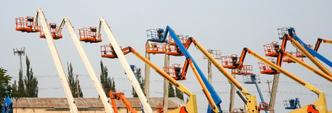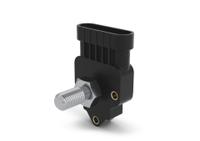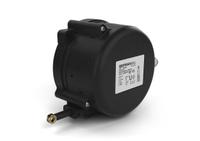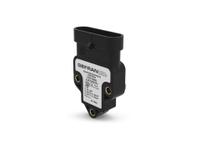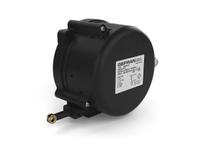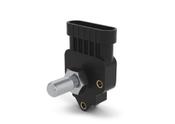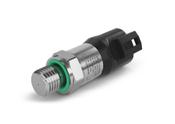A telehandler is a multi-purpose machine widely used in construction sites and for industrial handling. The combination of extendable boom, rotating wheel and stabilisers allow it to lift, transport and position load even at great heights and distances. The integration of advanced sensors guarantees constant control of stability, precision in manoeuvres and safety in the most complex operating conditions.
Requirements:

Driving pedals position control
Learn more
Steering angle control
Learn more
Boom position detection
Learn more
Vehicle tilt monitoring
Learn more
Stabilizers position adjustment
Learn more
Hydraulic circuit pressure monitoring
Learn more
Operating principle
The telehandler combines vertical lifting and horizontal movement functions through an extendable boom mounted on a rotating turret, allowing it to reach loads positioned at different heights and distances. The engine transmits power to the hydraulic systems that operate the boom, bucket, or forks, while the stabilizers ensure balance and stability even during the most demanding lifting operations. The cab houses the main controls and management systems that handle steering, boom extension, and attachment positioning.
To ensure all these operations are performed safely, accurately, and efficiently, the telehandler must rely on continuous monitoring of mechanical, hydraulic, and stability parameters.
Requirements and technology
Telehandlers must ensure stability, safety, and precision during lifting and handling operations involving heavy loads or people—often at great heights and with the boom fully extended. For this reason, they must integrate reliable sensor solutions capable of withstanding vibrations, shocks, dust, moisture, and extreme temperatures.
Key technology requirements include:
- Driving pedals position control
- Steering angle control
- Boom position detection
- Vehicle tilt monitoring
- Stabilizers position adjustment
- Hydraulic circuit pressure monitoring
Gefran offers a complete portfolio of linear position sensors, rotary sensors, tilt sensors and pressure sensors, designed to support telehandler manufacturers in the development of safe, efficient and durable machines.
